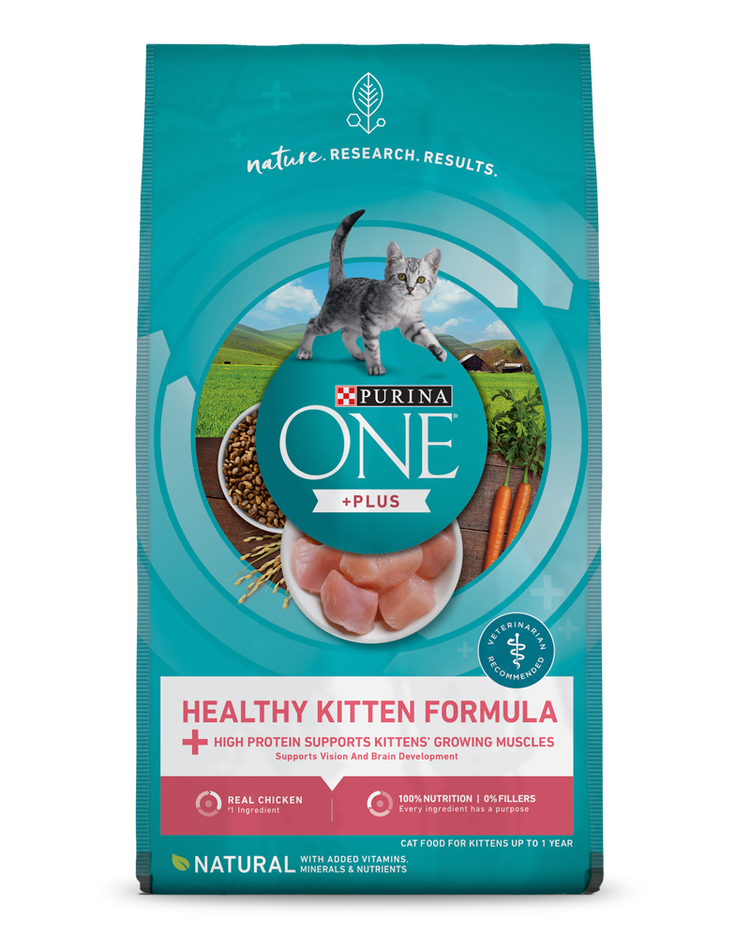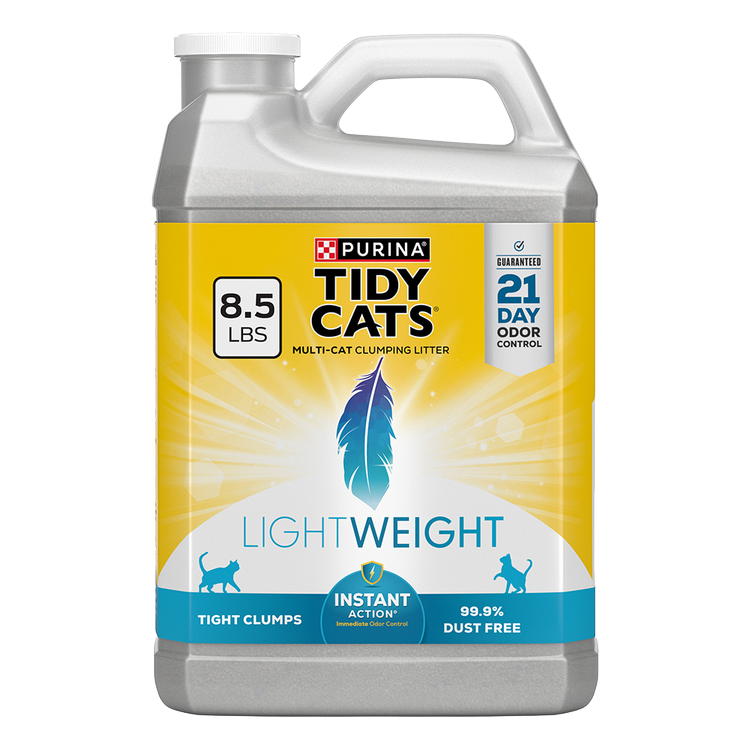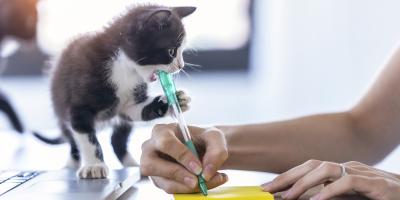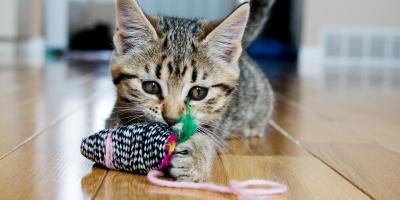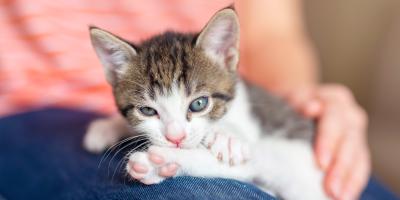New Kitten Checklist: What Does a Kitten Need?

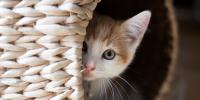
If you’re considering bringing a new kitten into your family, being prepared with everything your new feline friend might need can help you have the most fun and set you both up for success.
A little planning will help create a smooth transition that’s less stressful for you and your new cat. If you’re asking yourself, “What are the things I need for a kitten?” Start with this new kitten checklist to make sure you have everything you need, from kitten food and bowls to toys, litter and treats.
These items will help make your kitten’s first few weeks at home smooth and enjoyable for you both. Here’s a list of essentials so you’ll be ready:
New Kitten Checklist
The first step to take before you bring your new kitten home is to research local veterinarians and find one you’re comfortable with and can trust. Your veterinarian should communicate clearly and understand the needs of your kitten and your family.
Your veterinarian will start with a thorough exam and your kitten’s vaccination series. They can also give recommendations about feeding, microchipping, parasite control, socialization, and spaying/neutering.
Your veterinarian can also provide care if your kitten gets sick. It’s also a good idea to have a go-to emergency clinic number stored in your phone. Many emergency clinics are open 24 hours, but if there isn’t a 24-hour clinic near you, find one that will work with your schedule and know who to call for after-hour emergencies.
1. Pet Carrier
When transporting your kitten, you’ll need to put them in a carrier to keep them safe and provide them with a sense of security. Traveling can be scary for a kitten, so make sure their carrier is roomy and well-ventilated.
Try lining the bottom of the carrier with a towel from their former home or shelter to comfort them with a familiar scent. Make sure the carrier you buy closes securely and is easy to clean.
2. Wet &/or Dry Food
Kittens can eat wet or dry food—or a combination. Kittenhood is a perfect time to try a variety of flavors and textures. This will help them grow into more adventurous eaters as adults, which can be helpful if/when you need to change their food.
3. Food & Water Bowls
Your kitten will be curious, playful and have lots of energy, so select food and water bowls that won’t tip over too easily. Some kittens are sensitive to plastic, so opt for a different material, like easy-to-clean stainless steel or ceramic. You’ll want to wash their food and water bowls daily to keep them clean and fresh. Make sure your kitten always has access to fresh, clean water.
4. Litter Box
Provide a litter box with plenty of room to do their business. You’ll also need to buy cat litter and a scoop strainer to keep it clean. A clean litter box is essential because your kitten will avoid using one that’s messy and smelly, which can lead to accidents in the house.
Wash their litter pan once a week with soap and water. It is best not to use strong disinfectants (ones containing ammonia, for example), as they are unnecessary and may offend your kitten’s sensitive nose. Use a mild disinfectant such as diluted bleach and water on the litter box about once a month, allowing the box to dry outdoors in the fresh air, if possible. Always wash your hands thoroughly after handling.
Humans can contract an organism called toxoplasma from cat feces. It is recommended to wear gloves while changing your kitten’s litter and always wash your hands afterward. Pregnant women should be especially cautious and strongly consider asking another family member to clean the litter box because toxoplasmosis can cause potential birth defects.
5. Bedding
A comfortable bed makes for a cozy place to rest after they’re done exploring and romping around their new home. Until you see what your kitten’s preferences are, you may not want to spend a lot of money on a fancy wicker basket or plush bed. In the meantime, begin with a simple, cardboard “bed.” Get a roomy cardboard box with sides high enough to keep out drafts. Cut out a doorway, fill the box with an old cushion and cover it with a soft, washable material for warmth.
If possible, use an old sweatshirt for lining. Your scent will comfort your kitten and encourage them to use their new space. Since cats are particular creatures, keep their bedding clean. Place the bed in a quiet, draft-free corner away from the traffic in your house and soon this will be your kitten’s corner.
6. Scratching Post
Contrary to popular belief, cats do not use a scratching post to sharpen their claws. They use scratching posts for exercise (to stretch out to their full length), clean away dead skin cells from their claws, and mark their territory, both visually and with their scent.
Get a scratching post right away to help train your kitten early and dissuade them from clawing furniture. The scratching post should be sturdy and tall enough to let your kitten stretch out full length. You can start your kitten to use the scratching post as soon as they come home.
Encourage them to use their post by playing with them near or around it. Kittens are fast learners and they’ll likely understand the idea quickly. Then, when your kitten gets the urge to stretch, hopefully, they’ll use the post instead of your furniture. Try to place your kitten’s bed and scratching post close together, so they learn to use it first thing in the morning when they wake up and need a stretch.
7. Collar, Harness & Leash
A cat harness or leash can be a great training tool for your kitten, though they’re not a must. If you’re already thinking along these lines, a harness is probably best, as kittens often dislike the feeling of a leash. Make sure your kitten always wears a breakaway collar made of lightweight material and an identification tag. Have them wear one early on to get used to the sensation.
8. Grooming Tools
Grooming helps keep kittens’ skin and coat healthy and looking their best. You’ll need both a flea comb and a brush, though the type of brush you use depends on the texture and length of your kitten’s coat. Ask your veterinarian or groomer to recommend one that’s right for your kitten.
9. Toys
Kittens are naturally curious and need safe and fun toys for play to foster both physical exercise and mental enrichment. Choose toys made especially for cats—ones that cannot be splintered, torn apart or swallowed. A ball that rattles, a catnip mouse or a hard rubber mouse are all excellent choices. To avoid accidents, some cat toys should be used only when you are playing with them.
Toys don’t need to come from a store. You can create fun toys with your imagination and objects found around the house:
- A table tennis (ping pong) ball
- Empty wooden thread spool
- Balled-up waxed paper
- Cardboard toilet paper tube
- Empty shoebox
Some items you may be tempted to give your kitten could be harmful. Keep the following away from your kitten:
- Balls of string
- Spools of thread
- Rubber bands
- Balls of aluminum foil or cellophane
- Corks
- Wire twist ties
Also, avoid anything with hard, sharp points that can break off. Be wary of toys (or items a kitten may see as a toy) that can break, such as Christmas tree ornaments. Avoid giving them anything small enough to swallow, like buttons, beads or paper clips.
Keep your kitten away from children’s toys made of soft rubber, fur, wool, sponge or polyurethane. If your kitten swallows even a small particle, it could cause digestive problems. Avoid all toys with squeakers that could be swallowed.
If you have specific questions about your kitten, call your veterinarian. Learn more about kitten and cat ownership with tips from our experts on our Pet Expertise page.

Be Rewarded for Your Purina Purchases
Earn and redeem points for Purina products with myPurina app.


